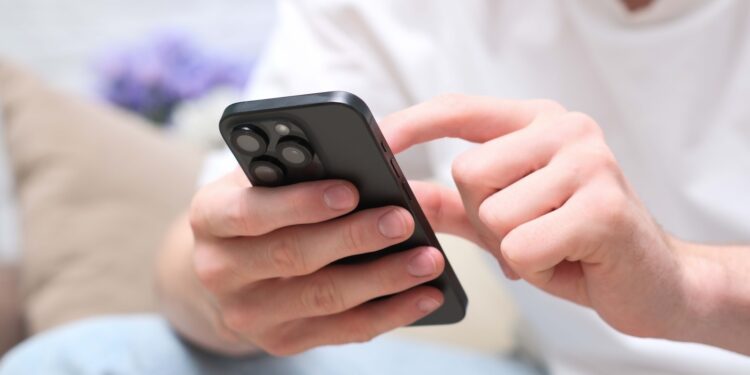The iPhone offers a wide range of accessibility features that are useful not only for people with disabilities. If you know and configure the right features, you can use your iPhone more easily, conveniently, and individually – without any additional apps or accessories. This article shows you seven important features built directly into iOS and explains how to activate and use them effectively.
Apple has been integrating numerous accessibility features directly into the operating system for years. While these accessibility features are primarily aimed at users with visual, hearing, or mobility impairments, they are also useful for anyone who wants to use their device more efficiently. Whether it's voice control, gestures, or visual adjustments, many of these features also help you use your iPhone faster and more conveniently in everyday life.
Enable and customize AssistiveTouch
With AssistiveTouch, you can control your iPhone via an on-screen menu that you can position anywhere. You can activate this feature under Settings > Accessibility > Touch > AssistiveTouch. In the "Customize Menu" menu, you can specify which functions you want to access directly via this overlay, such as "Screenshot," "Mute," or "Home Screen." This is especially helpful if hardware buttons are hard to reach or if you prefer to control your iPhone one-handed.
Use VoiceOver for speech output
VoiceOver reads everything on the screen aloud and allows you to operate the iPhone without visual feedback. You can enable it under Settings > Accessibility > VoiceOver. The system is based on special gestures: For example, swipe right or left with one finger to move between items, or double-tap to select something. In the settings, you can adjust the voice, speaking rate, and pitch to ensure the speech output meets your needs.
Configure zoom and magnifying glass
With the zoom function, you can enlarge screen content system-wide. You can find it under Settings > Accessibility > Zoom. Double-tapping with three fingers activates magnification, and dragging with three fingers moves the visible section of the image. Under "Zoom Region," you can choose between full-screen and window zoom. The iPhone also offers a magnifying glass app that you can display in the Control Center. This lets you use the camera as an electronic magnifying glass—useful for reading small print or spotting details.
Enable one-handed mode
One-Handed Mode helps you operate even large displays with one hand. You can turn it on under Settings > Accessibility > Touch > One-Handed Mode. Then, just double-swipe the Home button (on iPhones with a Home button) or the Gesture bar (on newer devices) to scroll the screen content down. This makes it easier to reach the top areas of the screen with your thumb.
Use voice control
Voice Control replaces touch input with voice commands. You can find it under Settings > Accessibility > Voice Control. Once enabled, you can control your iPhone using your voice. For example, you can say "Tap back," "Scroll down," or "Open Safari." Under "Customize Commands," you can add your own voice commands that then trigger specific actions. This is especially helpful if you want to quickly start routines.
Adjust color filter and contrast
Under Settings > Accessibility > Display & Text Size, you'll find various options for visually adjusting the display. These include color filters to help with color vision deficiencies, as well as color inversion (classic or smart). You can also increase contrast, reduce transparency, or disable automatic brightness adjustment. These settings not only help with poor vision but also improve readability in low-light conditions.
Add Accessibility Shortcut to Control Center
For quick access to your enabled accessibility features, you can add a shortcut to Control Center. To do so, go to Settings > Control Center > Customize Controls and add "Accessibility Shortcut." You can also specify which feature should be activated when you triple-click the side button under Settings > Accessibility > Shortcut. This way, you can quickly turn VoiceOver or Zoom on and off.
Use your iPhone smarter with just a few settings
The accessibility features on the iPhone are more versatile than many people think. With the seven features shown here, you can customize your device to your individual needs. The settings are easy to find and can often be activated in just a few seconds. Simply try out the different options and find out which ones make your everyday life easier. Whether you want to control your iPhone hands-free, view content more clearly, or operate it with one hand – the options are there. You just have to use them. The best products for you: Our Amazon Storefront offers a wide selection of accessories, including those for HomeKit. (Image: Shutterstock / Di_Ilikaeva)
- Apple Intelligence: From which iPhone is it available?
- iPhone & Co.: How to deactivate the advanced visual search
- Extend iPhone battery life: These 7 tips help immediately
- Editing iPhone RAW photos – 8 simple pro tips
- iPhone & Co.: How to deactivate the advanced visual search
- Extend iPhone battery life: These 7 tips help immediately
- Apple Music in iOS 26: Music Pins make access easier
- Setting up iPhone widgets: These 6 tricks you need to know
- Set up Apple Pay on your iPhone – quickly and securely
- Why an iPhone? These advantages are convincing in the long term
- Secure your iPhone properly: 5 important functions at a glance
- Save iPhone battery: When is power saving mode worth it?
- Use Apple Wallet safely, conveniently, and efficiently – 7 tips
- LG or Samsung Smart TV? How to disable tracking
FAQ – Using iPhone Accessibility Features Effectively
Accessibility features in iOS make using the iPhone easier—especially for people with visual, hearing, or mobility impairments. They also offer practical ways for everyone else to control the device more efficiently.
Go to Settings > Accessibility. There you'll find all features clearly organized by categories such as vision, hearing, physical, and motor control.
With AssistiveTouch, you can control your iPhone via an on-screen menu—ideal when physical buttons are hard to reach or you prefer to navigate one-handed. You can add functions like "Screenshot" or "Home Screen" directly to the menu.
VoiceOver reads the content on the screen. You control your iPhone with special gestures—for example, swiping or double-tapping. Ideal when you can't see much or anything at all.
Zoom enlarges content directly on the screen, while Magnifier uses the camera to magnify real-life objects. Both are helpful for people with poor eyesight or for reading small print.
You can find it under Settings > Accessibility > Tap > One-Handed Mode. Then, just swipe down (on newer devices) or double-press the Home button to make the top half of the screen more accessible.
You control your iPhone entirely with voice commands like "Scroll down" or "Open Safari." You can even define your own voice commands to perform routines faster.
These settings improve readability and visual presentation. They help with color vision deficiencies, increase contrast, or reduce visual distractions—especially in bright environments or for sensitive eyes.
Add the Accessibility Shortcut in Control Center. Go to Settings > Accessibility > Shortcuts to specify which feature is activated by triple-clicking the side button.
They were originally developed for people with visual, hearing, or mobility impairments – but they are useful for everyone. Many features make everyday life easier in general: for example, using the iPhone one-handed, navigating faster, or making the display easier to read. Accessibility features are therefore not exclusive – they are for anyone who wants to use their device more intelligently.





